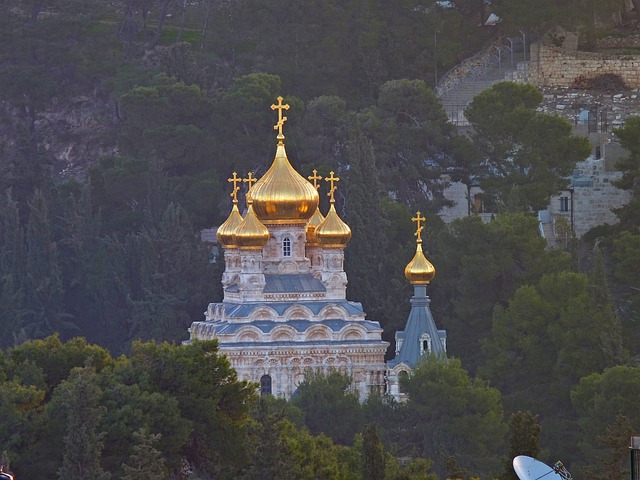Mount of Olives
The Mount of Olives, an iconic Jerusalem landmark, captivates tourists with its rich historical and spiritual significance. Offering breathtaking panoramas of the city, it’s dotted with ancient olive trees, echoing tales of Biblical events. Visitors explore holy sites like the Church of All Nations and the Garden of Gethsemane, immersing themselves in a pilgrimage through time and faith.
Table of Contents

Mount of Olives Tours & Attractions
The Mount of Olives, an iconic and historic hill located just east of the Old City of Jerusalem, is a destination that beckons to travelers seeking a unique blend of history, spirituality, and breathtaking vistas. This revered site has been a center of religious significance for millennia, attracting pilgrims and tourists alike to explore its many attractions and immerse themselves in its rich tapestry of stories.
Historical Significance: A Tapestry of Millennia
From a historical perspective, the Mount of Olives stands as a silent witness to countless events that have shaped the history of Jerusalem and the world beyond. In antiquity, the hill served as a burial ground for the city, dotted with numerous rock-hewn tombs that reflected the burial practices of different eras. These ancient tombs, some dating back over 3,000 years, offer a glimpse into the lives, customs, and cultures of the people who once inhabited this land.
Among the most notable historical landmarks on the Mount of Olives is the Church of All Nations, also known as the Basilica of the Agony. Situated near the Garden of Gethsemane, this magnificent church commemorates the spot where Jesus is believed to have prayed on the night before his crucifixion. The unique architecture of the church, characterized by its distinctive facade and ornate interior, draws visitors into an atmosphere of reflection and contemplation.
Spiritual Pilgrimage: A Haven of Faith
For people of faith, the Mount of Olives is a destination of profound significance. The hill is mentioned multiple times in the Bible, making it a sacred place for Christians, Jews, and Muslims alike. The name itself is derived from the olive trees that once blanketed the slopes and symbolized peace and spirituality.
The Garden of Gethsemane, located at the base of the Mount of Olives, is an essential stop for pilgrims. This serene garden is believed to be the place where Jesus prayed and agonized before his arrest. The ancient olive trees that still stand here evoke a sense of timelessness, connecting visitors to the events of the past.
Adjacent to the garden, the Church of All Nations stands as a testimony to the international nature of faith. Pilgrims from around the world gather here to pay their respects and engage in quiet prayer, fostering a sense of unity among diverse cultures and backgrounds.
Panoramic Vistas: A Feast for the Eyes
One of the most alluring aspects of the Mount of Olives is the panoramic view it offers of the Old City of Jerusalem. As visitors ascend the hill, a stunning panorama unfolds before them, showcasing the city’s ancient walls, historic buildings, and religious sites. This breathtaking view is particularly enchanting at sunrise and sunset when the warm hues of the sun cast a golden glow over the city.
The vantage point provided by the Mount of Olives also makes it an ideal location for capturing memorable photographs. The vista offers a unique perspective of the Dome of the Rock, the Western Wall, and other significant landmarks that define Jerusalem’s skyline.
Exploring the Mount of Olives
Beyond its historical and spiritual significance, the Mount of Olives offers a range of attractions in Jerusalem that cater to the interests of various visitors:
Chapel of the Ascension: Believed by Christians to be the site of Jesus’ ascension to heaven, this small octagonal structure is a place of quiet reverence. The chapel’s interior is adorned with mosaic artwork depicting scenes from the New Testament.
Tomb of the Prophets: A collection of burial caves, this site is traditionally associated with the resting places of biblical figures like Haggai, Zechariah, and Malachi. Visitors can explore the intricately carved chambers and reflect on the historical and spiritual importance of these figures.
Russian Orthodox Church of Mary Magdalene: With its distinctive onion domes, this striking church is a visual landmark on the Mount of Olives. It’s dedicated to Mary Magdalene and houses beautiful artwork, making it a place of artistic and spiritual inspiration.
Dominus Flevit Church: Shaped like a teardrop to symbolize the tears shed by Jesus over the fate of Jerusalem, this church offers a serene atmosphere for reflection. Its design allows for a magnificent view of the Old City, providing a backdrop for introspection.
Absalom’s Pillar and Tomb of Absalom: These ancient monuments are part of a larger complex of tombs. Absalom’s Pillar is a free-standing stone column with intricate carvings, while the Tomb of Absalom is a rock-cut burial monument dating back to the Second Temple period.
Conclusion: A Multi-Layered Experience
A visit to the Mount of Olives is a multi-layered experience that blends history, spirituality, and natural beauty. The attractions scattered across its slopes tell tales of ancient civilizations, religious devotion, and human connection to the divine. Whether you are a historian, a pilgrim seeking spiritual solace, or a traveler captivated by stunning vistas, the Mount of Olives has something to offer to every soul who embarks on its storied paths. It remains a timeless destination that bridges the gap between the past and the present, inviting us to contemplate the threads of faith and history that have woven themselves into this sacred hill.
Home » Places to Visit » Visit Jerusalem » Mount of Olives